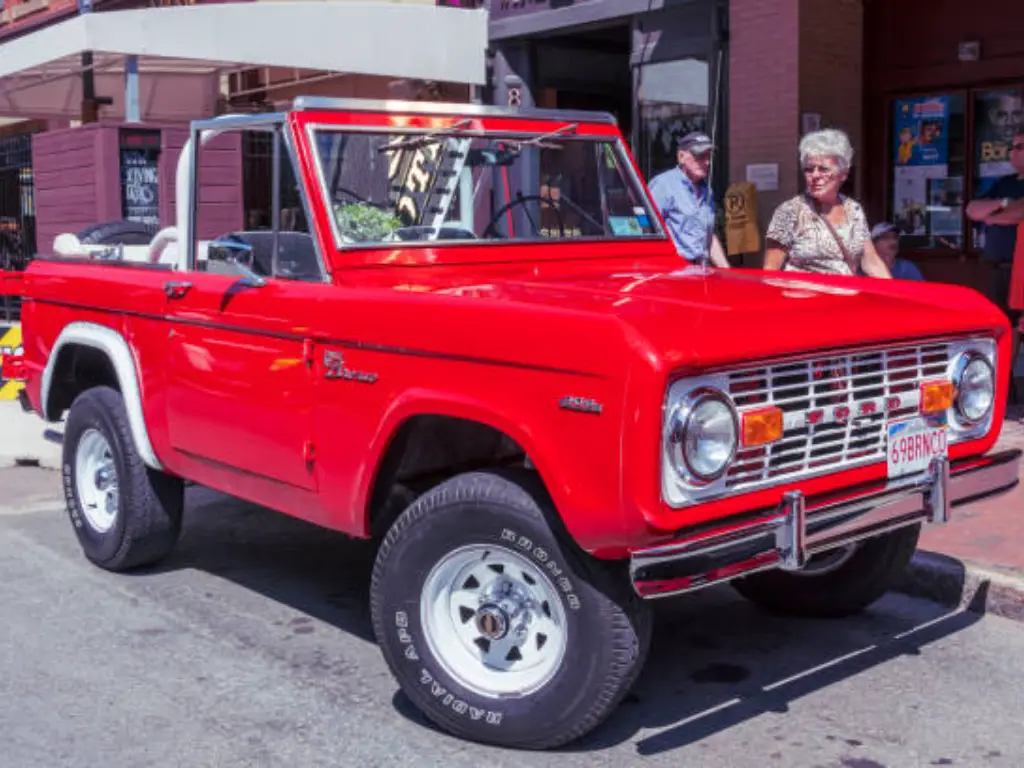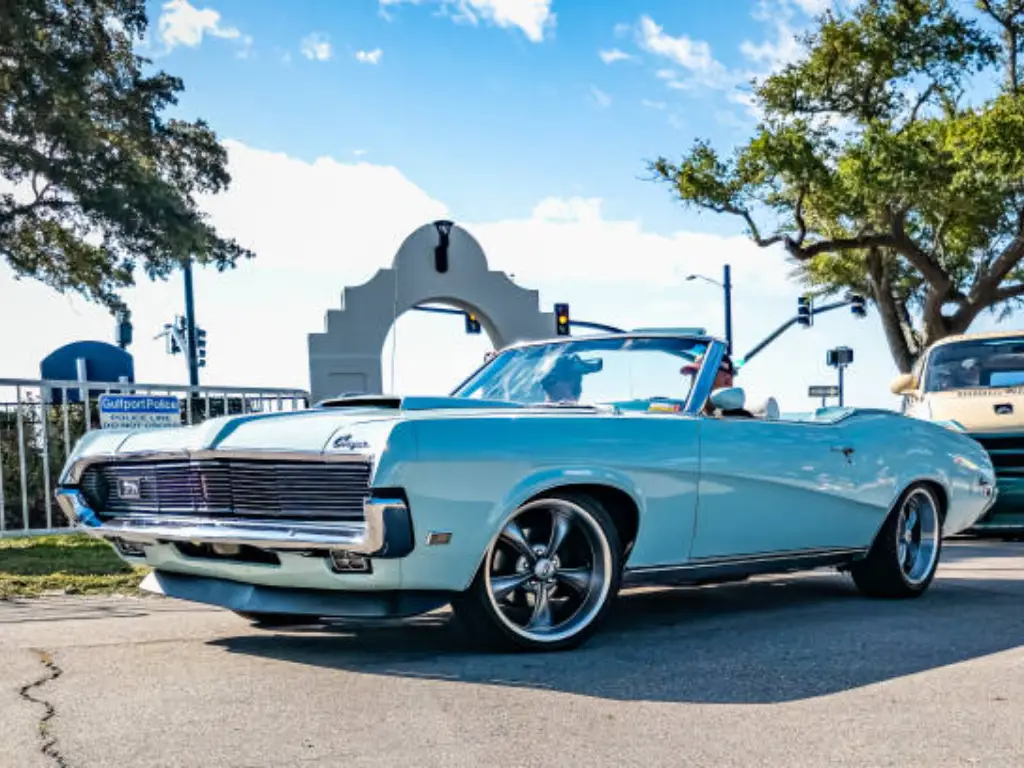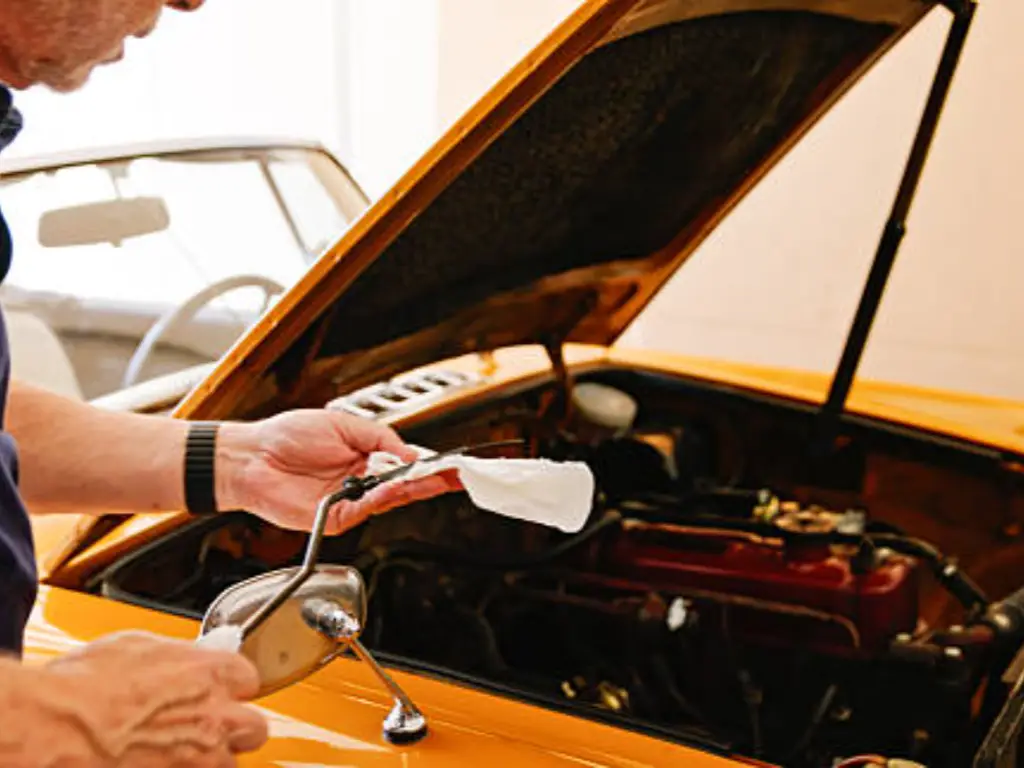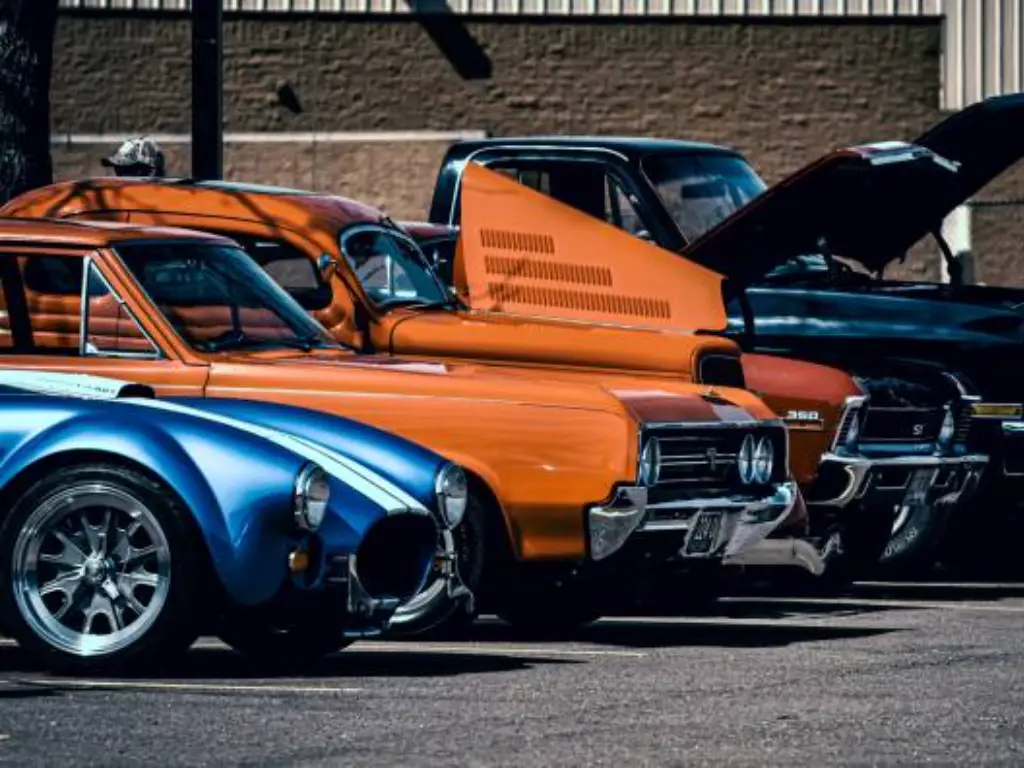Introduction
Classic cars have a magnetic power. It is not only the appreciation of old machinery but also a touch to history, a piece of something long gone in terms of design, passion, and innovation. Whether it be the thunder of a V8 that still rings out in a valley, the impossibly streamlined look of a fender, or the simple, sincere character of a car built by people, there is no doubt that classic automobiles stir the heart to some extent.
It is a pull that you, as a reader, must have experienced. You might have been looking at vintage brands of classic cars, or maybe you have seen an old car in a movie or a show, and thought, they do not make cars like these anymore. You are at the start of a very interesting adventure, but it may also be a scary one. The various markets around cars, when you want a classic, will be numerous–which one do you go to first? What names really count?
This guide is aimed at you. In an effort to demystify the classic car world, we look at 12 of the most iconic classic car brands anyone who wants to be in this business needs to know. We are going to discuss what made them legendary, the main models that characterize them, and what it really means to own and take care of one of these historic cars. We will even assist you in thinking about what would be the ideal car as your first car.
What Makes a Car Brand “Classic”?
Now that we are about to look at the names, what exactly is meant by the term classic? As a term, it is commonly used loosely but when it comes to enthusiasts or official clubs, there is a weight that is attached to it. Although authorities differ on their definition (most notably, some organizations use the term to mean a Fine or Unusual particular car built between 1915 and 1948, while others use the term to mean any old car), a general, up-to-date convention is now taking shape.
It is possible to say that a brand attains its classic status based on a combination of the following factors:
- Historical Impact: Has the brand brought an innovation that made the game into something new, like the assembly line at Ford, or created a new market segment?
- Enduring Design: Will its cars still be liked decades later in terms of their aesthetic appearance? The Jaguar E-Type is such a perfect example.
- What cultural influence has the brand impacted? Was it associated with an era, a lifestyle, or a subculture, such as the Volkswagen Beetle in the United States?
- Motorsport Pedigree: Has it sailed successfully on the racetrack, such as Le Mans or the Formula 1 competition, verifying its performance and engineering claims? Image Ferrari or Porsche
- Innovation: Did the brand develop first-mover advantages within the sphere of engineering, safety, or luxury, where it was the leader, and the industry can follow?
A classic car is not just an old vehicle but a car with a history, a heritage, and a legacy of its own, and it has made a mark in history. That is why some of the old classic car brands from the United States, i.e., Chevrolet or Cadillac, still have a special status among the enthusiasts, and people freely discuss which years of manufacture were the most representative ones of the brand.
Iconic Classic Car Brands You Should Know About
These are 12 automotive brands that made it to the automobile hall of fame. All of them provide an incomparable starting point in the sphere of classic car ownership just as well as seeing through the separate levels of automotive history.
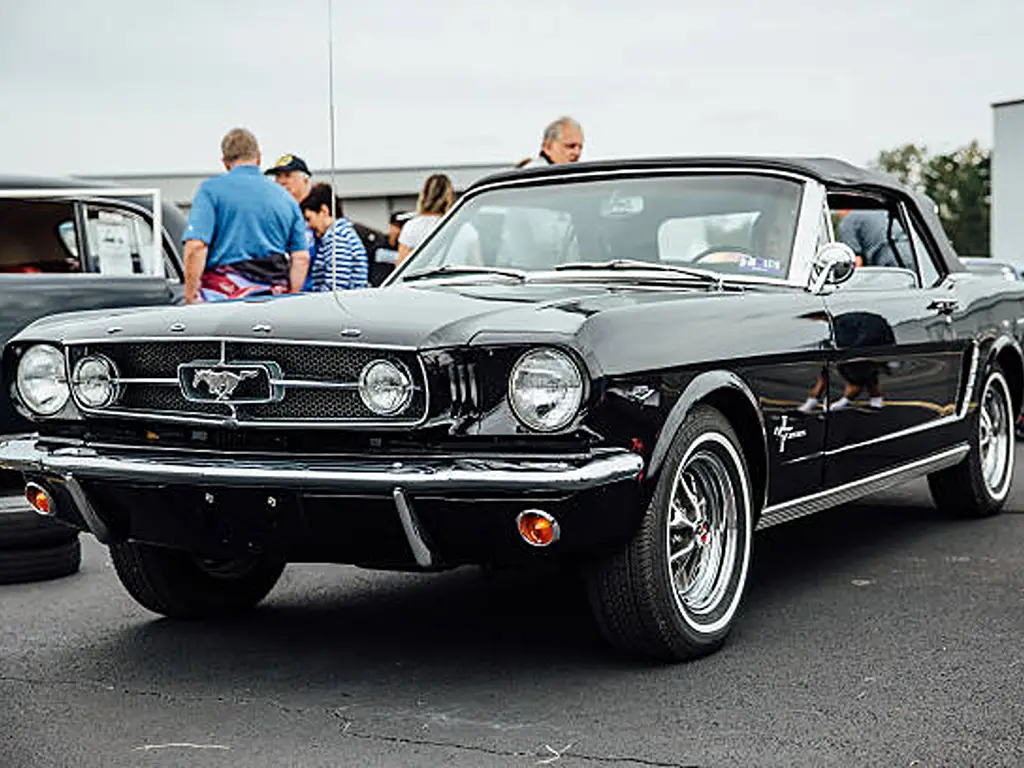
1. Ford: The American Everyman’s Hero
One cannot start a discussion about classic cars without Ford. Ford Motor Company not only manufactures cars but also gave birth to the contemporary car industry.
The Model T sold more than 15 million units, making the world go on wheels. The Mustang is, however, the entry point to the legacy of Ford for most beginners today. It was introduced in 1964, pioneering the class of so-called pony cars and becoming an immediate cultural icon. Affordable, highly customizable, and even sporty might be the answer to how a person should look at the first-generation Mustang (1964–1973) as the best entry-level classic.
For those craving even more performance, Shelby versions of the Mustang offered race-inspired handling and aggressive styling, becoming instant collectibles. Ford’s broader classic legacy also includes models from Mercury, its mid-tier brand, which produced stylish cruisers that now hold nostalgic value among collectors. The Mustang, Shelby variants, and Mercury Cougars are all viewed by many as staples on any classic car list of the 70s era.
2. Chevrolet – America’s Timeless Muscle and Family Cars
The biggest competitor of Ford since time immemorial, Chevrolet has been called the heart beat of America since decades; it is referred to as the Heart beat of America because of the sleek lines of Bel-Air of the 50s which represented the post war spirit of hope and the raw power of the Chevrolet Camaro, created in a bid to take on the Mustang. The biggest competitor of Ford since time immemorial, Chevrolet has been called the Heartbeat of America for decades. This title stems from the sleek lines of the Bel Air in the ’50s, which represented post-war optimism, and the raw power of the Chevrolet Camaro, created in a bid to take on the Mustang.
Chevrolet also has its crown jewels: the Chevrolet Corvette and the Chevrolet Chevelle. The Corvette was America’s first true sports car, introduced in 1953. The C2 (Sting Ray) (1963–1967) and C3 (1968–1982) are legends, boasting dramatic styling and potent V8 engines—embodying the peak of American performance, particularly during the 70s, when muscle cars ruled the roads.
Beyond the sports segment, Chevrolet offered family-oriented powerhouses like the Impala, a model that blended comfort with attitude and became a mainstay of American driveways. Meanwhile, GMC, Chevrolet’s sibling under the GM umbrella, contributed to the era with rugged trucks and utility vehicles that are now gaining popularity among classic vehicle enthusiasts.
3. Mercedes-Benz – A Legacy of Luxury and Innovation
Mercedes-Benz has long been considered quintessential to engineering, luxury, and innovative safety options for more than 100 years now.
Although many of their models are classic, there is one that is an automotive immortal, the 300SL gullwing (1954 – 1957). It had direct fuel injection (the first of its kind in a production car), and the top-hinged doors were also iconic, making it the supercar of its time. The more affordable, but equally stylish (and still elegant), W113 Pagoda SL (1963 – 1971) is an excellent alternative, with a reliable engine, sturdily built interior, and a wonderful ride. The impact that Mercedes had on the history of the automotive industry can hardly be underestimated.
4. Ferrari – The Epitome of Italian Performance and Style
Ferrari is not only a car brand, but it is also the dream of many people. The envy of the world, born with the obsessive nature of Enzo Ferrari in racing, every road car inherits the genes of the racetrack. The faster horse logo is a symbol of unequaled excellence and enthusiasm.
Although a classic like 250 GTO can sell 50 million dollars upon auction, fresher options that embody the spirit of the classic like the 308 GTB/GTS (19751985), having been featured in such a famous show like Magnum, P.I., would provide the perfect sense of the V8 that Ferrari is at its finest and the unique access to that past.
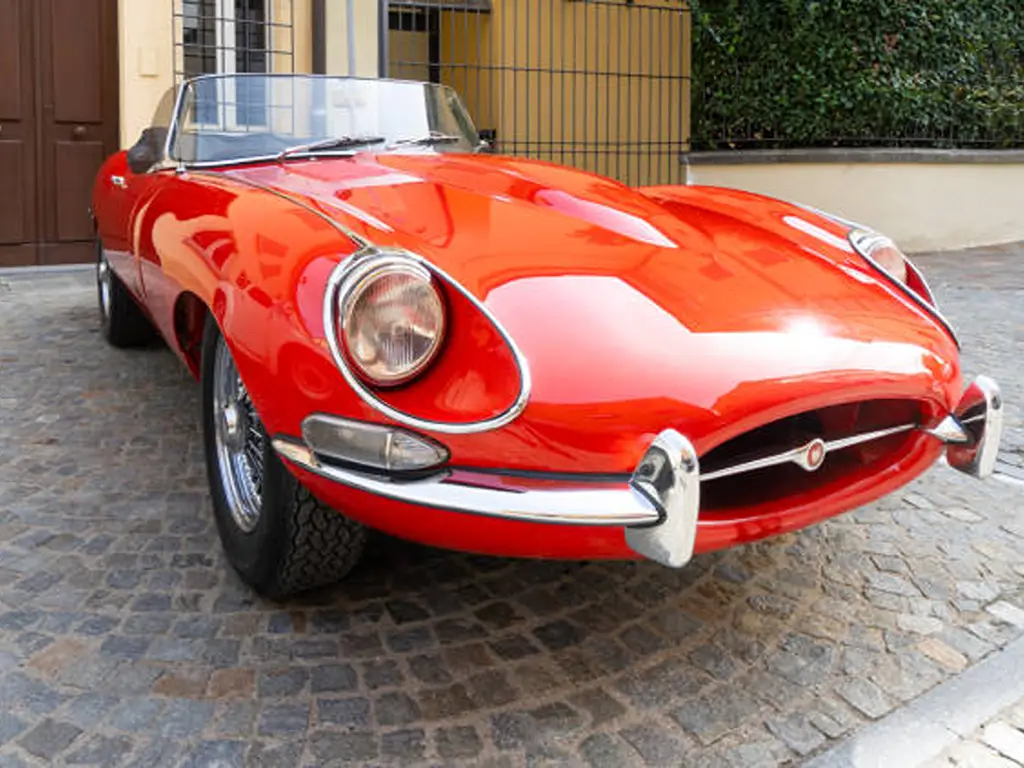
5. Jaguar – British Elegance and Racing Heritage
Jaguar has also achieved the art of harmonizing grace, pace, and space. Its sports cars produced in the post-war era are amongst the most beautiful cars to be made. The unquestionable hero is the E-Type (or XK-E) (1961-1974). When it first came out, Enzo Ferrari is reported to have said that it was the most beautiful car to have been produced. With its long hood, stunning curves, and Le Mans-winning heritage, the E-Type offers supercar looks and performance at a fraction of the cost of its Italian contemporaries.
6. Porsche – German Engineering at Its Finest
Porsche demonstrates that careful engineering can make the driving experience emotional. The identity of the brand can not be separated from the only model: 911. The rear-engine and the flowing design have been mainstays since 1964, and the design has not been altered in at least five decades since, an indication of how perfect the car has been.
In particular, air-cooled 911s (made up until 1998) are all the rage due to the raw, unrefined nature of driving them and the sound of the flat-six engine. They are tough, supremely entertaining, and a pillar of some of the most revered vintage car makers. The early classic car brochures of Porsche not only underlined the performance, but they also emphasized precision as a value that the company has retained even today.
7. Alfa Romeo – Italian Passion and Racing Pedigree
Ferrari is the Italian heart-stopping supercar, and Alfa Romeo, its soul. Alfa Romeo has always been the car of people who love to drive, and the history of the racing car started even before Ferrari. They are famous because of their lovely styling, high-revving engines, and chassis that are suicidal. The Spider, which was made in almost thirty years (19661993), is a typical classic Italian roadster that has been captured in the movie The Graduate. It is an inexpensive and neat way of getting a taste of the exhilarating world of Italian motoring, and this is one of the prettiest convertibles of its era, featured prominently in classic car advertisements of its day with its romantic style.
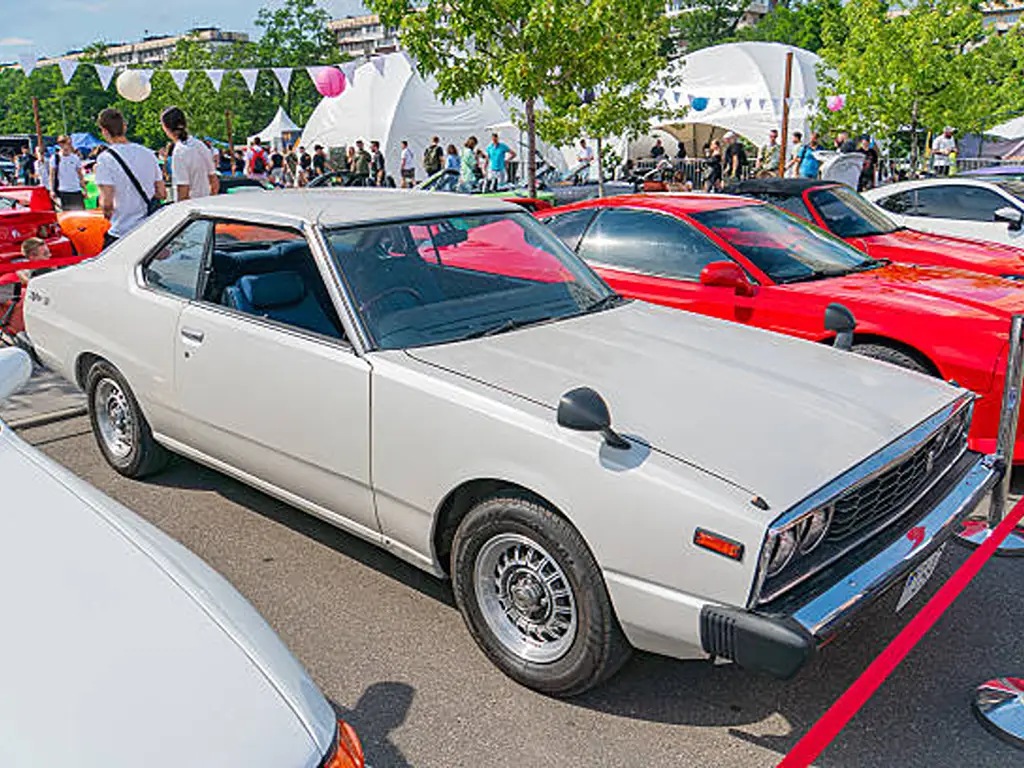
8. Datsun (Nissan): The Japanese Giant That Changed the Game
To a certain degree, the European sports cars had a high rate of unreliability, and in the late 1960s, beauty was a right attributed to them. In 1969, there was the Datsun 240Z. It was stylish, with hints of the E-Type, it had sporty performance to be excited by, and it was Japanese and reliable. The 240Z was the car that heralded that a performance car can be thrilling without being unreliable, totally transforming the market and bringing Japan into the global car spotlight as a top-notch car maker. It is nowadays considered one of the most influential vintage car brands that ever came out of Asia.
9. Volkswagen – The People’s Car That Conquered the World
Not all classics are high-performance machines. The Volkswagen Beetle is a classic because of its profound cultural impact and brilliant, simple engineering. Designed by Ferdinand Porsche, it was a car for the masses. Over 21.5 million were built, making it one of the best-selling cars of all time. Its air-cooled engine is famously easy to work on, making it a favorite for beginner mechanics and DIY enthusiasts. The Beetle and its sibling, the Type 2 (Bus), are symbols of an entire counter-culture movement.
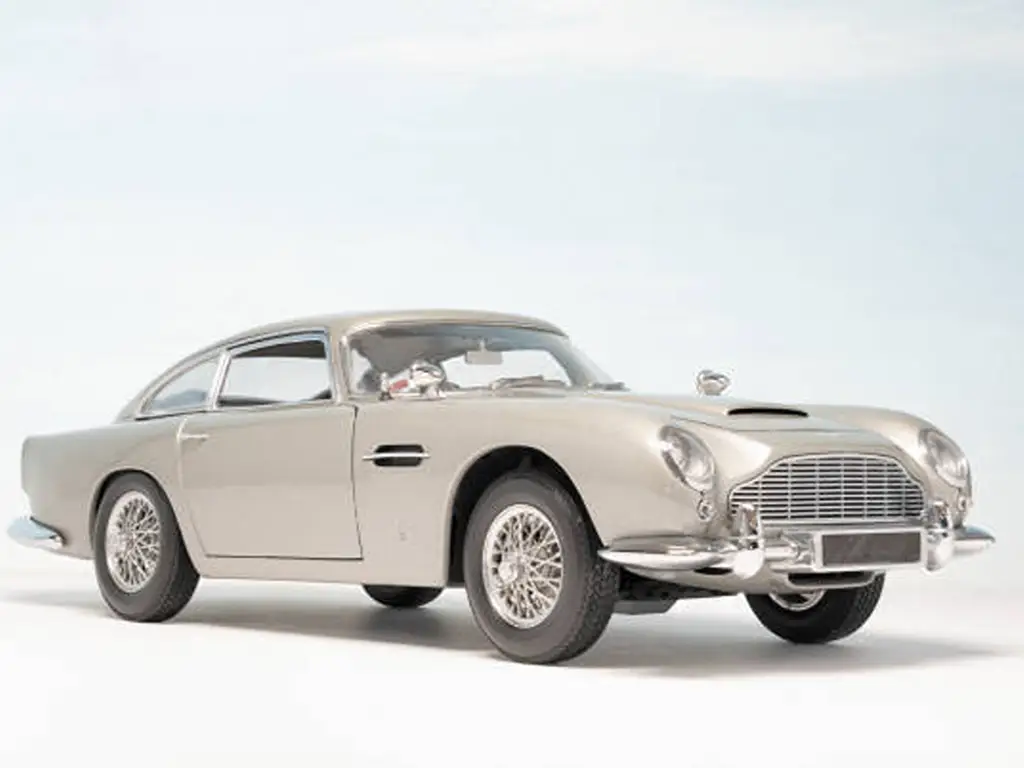
10. Aston Martin – British Grand Touring Excellence
Aston Martin is a brand that is both sophisticated and high performing. Aston Martin has forever been associated with a famous fictional superspy, and thus epitomizes everything the British grand touring (GT) can be in a car: quick, stylish, and ready to go the distance.
The best-known is the DB5 (19631965), but the DB4 and DB6 are dazzling, too. They are a symbol of the bygone days of handwork, sumptuous interiors, and a robust straight-six engine, and they provide a driving experience that is both super entertaining and smooth. Aston Martin has been one of the most popular vintage car brands that is privately owned by collectors, with its legacy being exemplary elegance and engineering.
11. BMW – The Ultimate Driving Machine Legacy
BMW made its name as a sporty compact sedan maker, placing a central emphasis on the driver. The mantra of the brand, The Ultimate Driving Machine, was no marketing gag; it was so because that was what the car produced. The car that cemented this legacy is the 2002 (1968-1976). It was easy to drive, worked marvelously, and had sporty ’70s performance, which set the prototype of the contemporary sport sedan. That was succeeded by the E30 M3 (1986-1991), a series of homologation specials that swept touring car races and is now remembered as one of the best driver cars ever.
12. Dodge – Classic American Muscle Power
Dodge reigns when it comes to unadulterated American muscle. Dodge, and its sister make Plymouth, were in the horsepower wars of the late 1960s and early 1970s with famous Hemi and Magnum V8 engines. The Charger (particularly of the 1968-1970 generation) became an embodiment of fierce, threatening styling, and the smaller Challenger provided a powerful alternative to the pony cars. Having an old Dodge is all about glorifying raw power, straight line acceleration, and the time when muscle cars were still the gold.
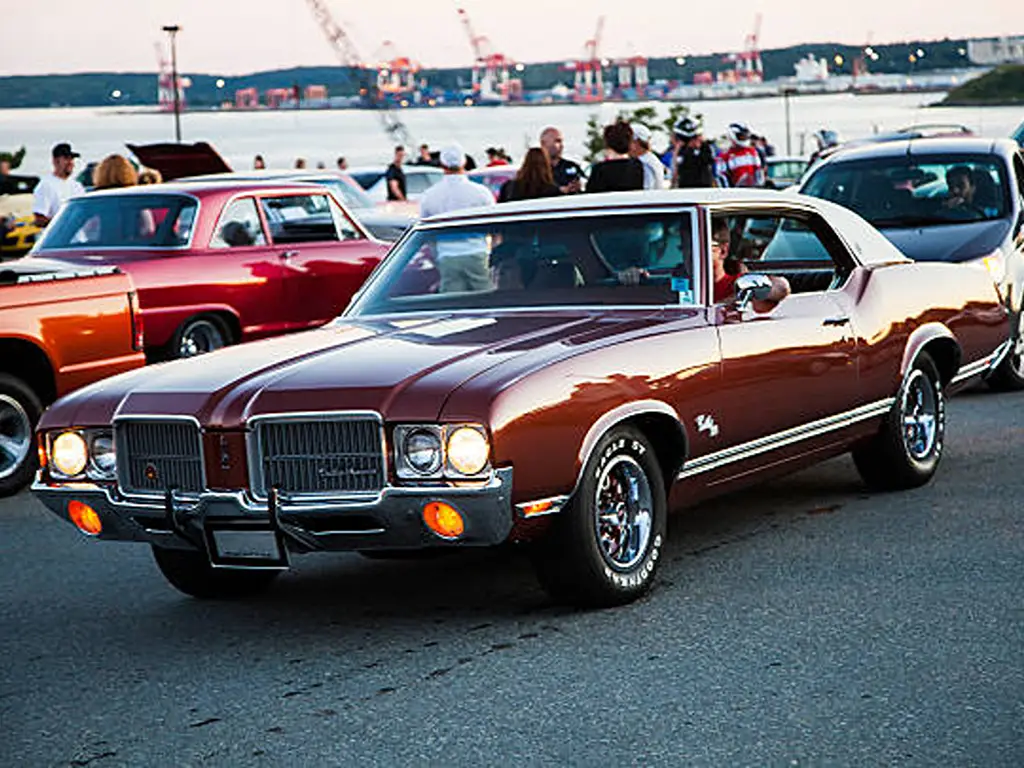
13. Oldsmobile – America’s Innovative Mainstay
Oldsmobile served as the innovation leader of General Motors throughout a significant part of the 20th century, introducing, among other things, the first truly automatic transmission (Hydra-Matic) and the contemporary overhead valve V8 engine. The Rocket 88 of 1949 can be considered an epic vehicle, with music historians citing it as being a source of inspiration regarding the first song in rock-and-roll and auto enthusiasts citing it as the prototype of the muscle cars, i.e., a big V8 under the hood and a smaller, lighter body. Later, Cutlass 442 was one of the most respected and most balanced muscle cars of the golden age, which was a perfect combination of performance, style, and comfort the symbolization the high standards of American driving.
14. Honda – The Giant of Reliability and Smart Engineering
Whereas Datsun made the first shot, Honda established the reputation of Japanese cars as bulletproof and smartly designed. The Honda Civic became a solution in times when it was all about the oil crisis of the 1970s. Its CVCC motor was so effective that it could comply with the American strict emissions legislations, but with no catalytic converter that its US rivals could not accomplish yet.
Prior to taking command in the small-car arena, Honda had already built a reputation in motorcycle circles by bringing accuracy in engineering to matchability and affordability. The application of the same philosophy is transferred to its automobiles. To the hardcore, the original Prelude (19781982) and the early CRX (19831987) exemplified how Honda could produce a joy to drive, a leading-edge and incredibly economical little car, establishing a new benchmark in the compact sector. The vehicles, like their scooter-based counterparts, were able to gain Honda a very large fan base that extended far beyond its motorcycle heritage.
15. Pontiac – Performance and Style for the People
Pontiac was the long-standing excitement brand of General Motors, just below the Oldsmobile or Buick in terms of upscale pricing, but still reasonably affordable and a good middle way between the Chevrolet and the Oldsmobile or Buick. In 1964, the brand hit pay dirt when the larger Tempest received a crammed-in big 389-cubic-inch V8, the result of which was the iconic GTO and the full-blown muscle car craze. The GTO was a performance car at a low price tag Then there was the Firebird Trans Am, and especially the second-generation ones (1970-1981) with the screamin chicken decal on the hood, which played out in the pop culture equation as a true superstar that left Pontiac well-established as an iconic source of raw, brash American style and power.
Owner’s Reality Check: Common Challenges
| Brand Category | Common Maintenance Pain Point | Typical Component to Address |
|---|---|---|
| American Muscle (Ford, Chevy, Dodge) | Perishable rubber components (bushings, hoses), basic electrical systems, drum brakes. | Suspension bushings, engine seals, wiring harnesses, brake conversion kits. |
| British Elegance (Jaguar, Aston) | Complex Lucas electrical systems (“Prince of Darkness”), potential for rust, oil leaks. | Upgraded alternators, high-quality gaskets, modern wiring looms. |
| German Engineering (Porsche, BMW, MB) | Fuel injection systems (early models), complex electronics (later models), suspension wear. | Fuel pumps, relays, precision-made suspension components. |
| Italian Passion (Ferrari, Alfa Romeo) | Frequent “major” services (timing belts), electrical gremlins, rust-prone bodies. | High-tensile timing belts, upgraded electrical connectors, quality sealants. |
Beyond the Brand: The Reality of Owning a Classic
The initial step is to be in love with a brand. Ownership, however, is not all sun and Sunday drives. These are devices, some of which are more than 50 years old and consist of the technology of that day. Rubber deteriorates, wiring dries out, seals dry up, and original parts are incredibly hard to find.
That is the main problem that every owner of a classic car has to transform and deal with: how to combine the conservation of the soul and character of a historic automobile with providing it with safety and reliability, and making such an automobile an enjoyable vehicle to drive? Obtaining a certain trim component of a given model year, like a 1968 Charger or a dependable ignition coil of a 1972 Alfa Romeo, is not an easy task that can be accomplished by visiting a contemporary dealership. These parts are no longer in production, especially on many old car brands, especially classic cars. This search for the trusted, good components is an adventure by itself, and in this search, the most annoying part of the ownership process can be revealed.
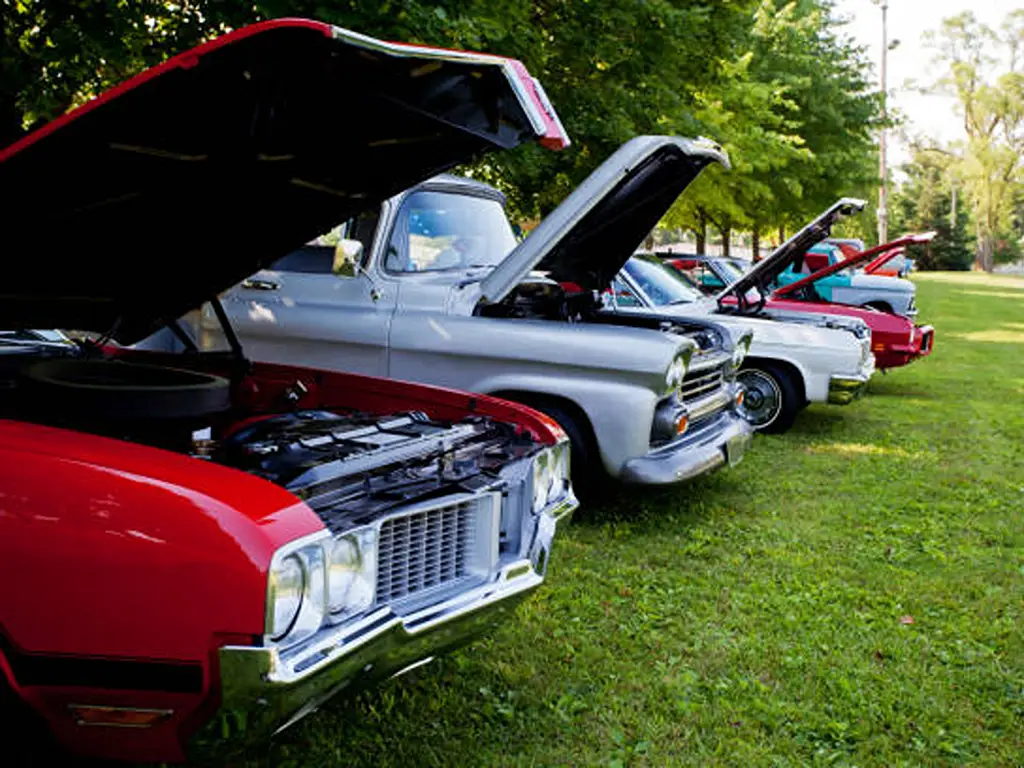
Keeping History Alive: Your Partner in Preservation
This is where the thrill of having a classic can be introduced to the test of keeping it running. It is also a collective effort to keep these legends on the road, and having a reliable partner in such an endeavor is essential. It is not all about finding a part; it is about finding the right part.
The Sunway Autoparts Difference: More Than Just Parts
We comprehended this challenge in 2007 at Sunway Autoparts. This is our field of expertise, and we pride ourselves on being more than a supplier of classic auto parts. We are your invaluable contact in the chain of restoration. We have based our success on producing high-quality products as fast as possible at the cheapest cost to you so that you can do what you love, driving and enjoying your car.
It is common knowledge that a misfit or prematurely failing part not only costs money; it costs your most important resource of your time. This is the reason why we are maniacs about quality. We employ stringent processes of manufacturing to ensure that our components are of the same standard as the original equipment. This implies that our components go in right the first time, every time, and this cuts a big slice of labor hours out of your pocket. Visualize the possibilities of accomplishing a project in less time, with increased confidence, and proceeding to the next activity with satisfaction.
We possess a tremendous knowledge of a huge variety of brands, with many of the brands on this list, such as Ford, Chevrolet, Porsche, BMW, Buick, Fiat, and Jaguar, that go back to the mid-1920s and go up through the late 1990s. Our supply chain is extensive (over 150 vendors) and based on a variety of long-running, trusted relationships, making us capable of not only providing standard components as replacement parts but also of sourcing elusive components or creating a custom solution to your special project. By joining forces with us, you will have a sustainable, quality, and controlled supply of the parts you require, founded on a uniform product and controlled inventory.
We are not simply a parts provider; we offer solutions and help you to accept projects that could not be accepted by other people and make difficult restoration a big-value job, a profitable project.
Conclusion
The path of classic car ownership is one of the most fulfilling activities that you will ever engage in. It is a passport into a globalized world, a practical history lesson, and a driving experience in itself that has no comparable counterpart. Our 12 brands covered in this post represent a wide range of design and engineering philosophies, but one thing these and more brands have in common is their legacy, which remains captivating.
There is no objective criteria that cases someone to choose which are the best types of cars to get as first classic cars Moving through the classic car brands and the vibrant classic car market, one can easily fall in love with the blue collar fabric of a Ford Mustang, the clean technology of a Porsche 911, or the classy grace of a Jaguar E-Type, all of which become iconic historic legends.
Of course, there will be difficulties. There will be oily fingernails and exasperation. And with the proper knowledge and the proper cooperation, those hurdles can be considered all part of the rewarding process of preservation. Therefore, research, visit owners, and most importantly thing is, find the car that appeals to you. The highway beckons, and a history full of colour beckons.

